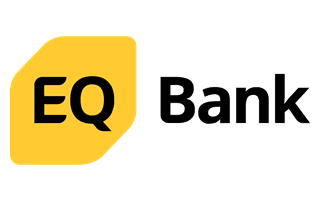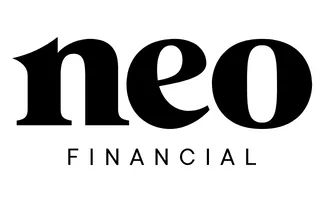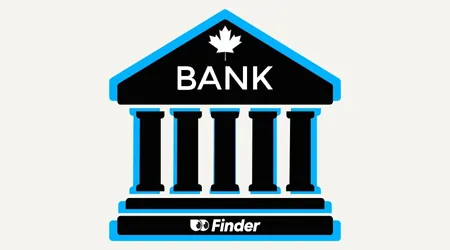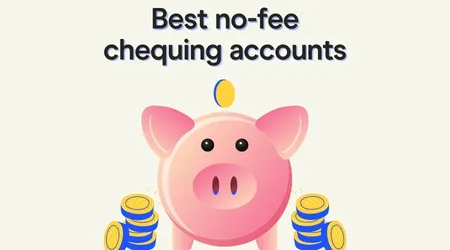
- Earn up to 3.00% interest
- $0 account fee
- No minimum balance required
- No monthly deposit requirements
- CDIC protection up to $100,000
Searching for the best high-interest savings account can feel like a huge burden with hundreds of options to choose from and so many banks, credit unions and fintechs advertising their rates.
That’s why we’ve done the hard work for you and spent many hours gathering information and analyzing account features to come up with a list of the best high-yield savings accounts in Canada.
We looked at features like account fees, access to funds, security and, of course, the best interest rates to compile this list. Check out our top picks below and keep reading to learn how to decide which savings account is best for you.



Our pick for the overall best high-interest savings account in Canada is the EQ Bank Personal Account—a savings account that consistently offers high promotional rates along with competitive ongoing rates.
Plus, the account can be linked with the EQ Bank Card, which gives you up to 0.5% cash back on your spending. Add to that other perks like unlimited free transcations every month and free ATM withdrawals, and it’s easy to see why this account topped our list.
| Min. Age | 18 |
|---|---|
| Account Fee | $0 |
| Transaction Fee | $0 |
| Interac e-Transfer Fee | $0 |
| NSF Fee | $0 |
Our pick for the overall best high-interest savings account in Canada is the PC Money Account. This account offers one of the highest interest rates in Canada, while offering the same access to your funds that you would get with a chequing account.
The PC Money Account is offered by PC Financial, a trade name of President’s Choice Bank, which is CDIC insured. You can easily manage your PC Money Account online or through the PC Financial Mobile app.
| Min. Age | N/A |
|---|---|
| Account Fee | $0 |
| Transaction Fee | unlimited |
| Interac e-Transfer Fee | unlimited |
| NSF Fee | $40 |
| International ATM Fee | $3 |
The EQ Bank Notice Savings Account is our pick for the best ongoing interest rates in Canada. It’s a unique account on the Canadian market because, if you agree to wait longer to withdraw your money from the account, you’ll earn a higher interest rate.
Here’s how it works. Earn 3.00% interest if you choose a 30-day withdrawal notice period or 2.85% interest if you choose a 10-day notice period.
| Min. Age | N/A |
|---|---|
| Account Fee | $0 |
| Transaction Fee | $0 |
| Interac e-Transfer Fee | unavailable |
KOHO made our list of best high-interest savings accounts in Canada because it lets you earn an impressive ongoing rate of 4% with the Everything Plan ($22/month, billed yearly), 3% with the Extra Plan ($18/month, billed yearly) and 2.5% with the Essential Plan ($4/month). Each plan also offers various amounts of cash back on your purchases.
| Min. Age | 18 |
|---|---|
| Account Fee | $4 |
| Transaction Fee | $0 |
| Interac e-Transfer Fee | $0 |
| NSF Fee | $0 |
The Scotiabank MomentumPLUS Savings Account is our pick for the best high-interest savings account with promotional interest because it consistently offers an unusually high promo interest rate compared to other traditional banks.
Scotiabank was established in 1832, so if working with a long-standing bank is important to you, the MomentumPLUS Savings Account could be just the right fit.
| Min. Age | 18 |
|---|---|
| Account Fee | $0 |
| Transaction Fee | varies |
| Interac e-Transfer Fee | $0 |
The Neo Financial savings account is another standout high-yield account. It has a high ongoing rate of 3% and highly-rated mobile apps for both iOS and Android. And since the Neo High Interest Savings account is provided by Peoples Bank of Canada, your account funds will be CDIC insured.
| Min. Age | N/A |
|---|---|
| Account Fee | $0 |
| Transaction Fee | $0 |
| Interac e-Transfer Fee | $0 |
Tangerine—a digital bank backed by Scotiabank—has a high-interest savings account that consistently offers both new and current customers high promotional interest rates. Earn 4.50% interest for 5 months (on the first $1,000,000 in deposits) when you sign up by July 31, 2025. Current customers also typically receive ongoing interest rate bonuses.
| Min. Age | 16 |
|---|---|
| Account Fee | $0 |
| Transaction Fee | $0 |
| Interac e-Transfer Fee | N/A |
The BMO Savings Amplifier Account is our pick for the best high-interest savings account from a Big Five Bank. Besides offering a competitive promo rate, this account comes with one of the highest baseline, ongoing interest rate of any Big Bank savings account at 0.8% on your entire balance.
| Min. Age | 18 |
|---|---|
| Account Fee | $0 |
| Transaction Fee | $0 |
| Interac e-Transfer Fee | $0 |
Simplii Financial’s HISA is the best high-yield savings account in Canada for its fee structure—or lack thereof. Also, Simplii Financial is owned by CIBC, which means it is CDIC insured and you can rest assured that your funds are backed by Canada’s second oldest bank.
Add to that a high promotional savings rate, and you can see why the Simplii High Interest Savings Account made our list.
| Min. Age | 18 |
|---|---|
| Account Fee | $0 |
| Transaction Fee | $0 |
| Interac e-Transfer Fee | $0 |
| NSF Fee | $45 |
| International ATM Fee | $3 |
The Wealthsimple Cash account made our list of the best high-yield savings accounts for people who want to earn a high rate of interest, while having the flexibility to spend directly from your account and earn cashback on your purchases.
Wealthsimple also gives you access to one of the best stock trading platforms in Canada, giving you the opportunity to grow your money well beyond what your savings account can offer.
| Min. Age | 18 |
|---|---|
| Account Fee | $0 |
| Transaction Fee | $0 |
| Interac e-Transfer Fee | N/A |
| NSF Fee | $0 |
To determine this best list, Finder Canada analyzed 22 savings accounts across 22 financial institutions. Our team compared accounts from traditional banks, digital banks, fintechs and credit unions. We narrowed down the list to the top 10 by listing accounts that are available Canada-wide.
We ranked accounts based on 13 data points within five major categories. Here’s how we ranked and weighted each product:
No single high-interest savings account will be the best choice for everyone, so thoroughly compare your options before picking your new account.
We’ve been monitoring high-interest savings account interest rates for years. To help give you a snapshot of how ongoing interest rates have changed over the years, take a look at this chart comparing rates from a Big Five Bank (Scotiabank) and a digital bank (Simplii Financial) from 2020 to 2025.
In the case of Simplii Financial, where its High Interest Savings Account offers a tiered interest rate, we’re illustrating the lowest tier rate here.
High-interest savings account rates increased substantially between 2022 and 2024. However, rates have begun dropping in the last quarter of 2024 and into the beginning of 2025—a trend that lines up perfectly with the Bank of Canada’s benchmark rates over the same period.
Below is a list of savings accounts from banks, credit unions and fintechs across Canada—including high-interest savings accounts—to help you compare options:
Savings account | Standard interest rate | Promo interest rate | Monthly fee |
|---|---|---|---|
2.85% - 3.00% |
No promotion available | $0 | |
4% |
No promotion available | $22 | |
Simplii High Interest Savings Account | 0.3% – 1.50% |
Earn 3.70% interest for 7 months on up to $500,000 in savings. Apply by June 30, 2025. | $0 |
Achieva Financial Daily Interest Savings Account | 2.1% |
No promotion available | $0 |
Alterna Bank High Interest eSavings Account | 1.25% |
No promotion available | $0 |
ATB Financial Springboard Savings Account | 0.2% – 1% |
No promotion available | $0 |
BMO Savings Amplifier Account | 0.8% |
Earn 4.75% interest when you open both a BMO Performance Chequing Account and a BMO Savings Amplifier Account. Plus, earn up to a $700 opening bonus with the chequing account. Valid until July 2, 2025 . | $0 |
Bridgewater Smart eSavings Account | 2.8% |
No promotion available | $0 |
Canadian Tire High Interest Savings Account | 2.75% |
No promotion available | |
CWB Summit Savings Account | 0.75% |
No promotion available | $0 |
CIBC eAdvantage Savings Account | 0.25% – 1% |
Get a Smart Interest of 0.25% on balances up to $200,000 when you save $200 or more in a month (limits apply), and a bonus rate of 5.00% (for 4 months). | $0 |
CI Direct Investing High Rate Savings Account | 1.75% |
No promotion available | $0 |
Coast Capital High-Interest Savings Account | 0.5% |
Get up to $500 with a chequing account and credit card. Plus, earn a 5.00% bonus interest rate with a Coast Capital High-Interest Savings Account. Conditions apply. Valid until June 30, 2025. | $0 |
DUCA Earn More Savings Account | 0.25% |
No promotion available | $0 |
FirstOntario Credit Union High Interest eSavings Account | 0.80% - 1.00% |
No promotion available | $0 |
Hubert Happy High-Interest Savings | 1.6% |
No promotion available | $0 |
ICICI Bank Canada HiSAVE Savings Account | 2.00% |
No promotion available | $0 |
Innovation Credit Union Savings Account | 0.75% |
No promotion available | $0 |
1% – 2.2% |
No promotion available | $0 | |
Manulife Advantage Account | 1.75% |
Get 4.70% interest for 120 days | $0 |
Meridian Credit Union High Interest Savings Account | 0.85% |
No promotion available | $0 |
Motive Savvy Savings Account | 2.25% |
No promotion available | $0 |
National Bank High Interest Savings Account | 0.75% |
No promotion available | $0 |
Neo High Interest Savings Account | 3% |
No promotion available | $0 |
Oaken Financial Savings Account | 2.8% |
No promotion available | $0 |
PC Money Account | 3.5% |
New customers can earn 200,000 bonus PC Optimum points (equal to about $200) by setting up $1,500 in payroll or pension direct deposits for three consecutive months | $0 |
RBC High Interest eSavings Account | 0.75% |
No promotion available | $0 |
0.55% |
Earn a savings rate of up to 5% for 3 months when you open a Scotiabank MomentumPLUS Savings Account and a Scotiabank Ultimate Chequing Account. | $0 | |
Servus Credit Union Premium Savings Account | 0.25%– 0.9% |
No promotion available | $0 |
Steinbach Credit Union Regular Savings Account | 2.00% - 2.20% |
No promotion available | $0 |
Tangerine Savings Account | 0.3% |
Earn 4.50% interest for 5 months (on the first $1,000,000 in deposits) when you sign up by July 31, 2025. | $0 |
TD ePremium Savings Account | 0.85% (on balances of $10,000 or more) |
No promotion available | $0 |
Vancity Jumpstart High Interest Savings Account | 0.7% |
No promotion available | $0 |
Wealthsimple Cash | 1.75% – 2.75% |
No promotion available | $0 |
A high-interest savings account (HISA)—also known as a high-yield savings account (HYSA)—is a bank account that pays out a relatively larger interest rate compared to standard savings accounts. The best high-interest savings accounts in Canada are designed to help you save money faster through the power of compound interest.
Our pick for the best high-yield savings account in Canada is the PC Financial PC Money Account. This hybrid account pays a high ongoing interest rate of 3.5% on every dollar you deposit, while offering convenient access to your funds with unlimited transactions, no monthly fee and no minimum balance requirement.
Of the banks on our list of the best high-interest savings accounts in Canada, Scotiabank is currently offering the highest savings promotional interest rate (up to 5.00% for 3 months, 0.55% thereafter). The banks offering the highest ongoing intereest rates on savings accounts are KOHO (between 2.5% and 4%) and PC Financial (3.5%).
The way a high-interest savings account works is simple: You deposit money into the account, and a high interest rate applies to every dollar of your balance.
Interest is usually calculated daily and paid monthly. Thanks to the earning-power of compound interest—in other words, earning interest on your interest—your balance will grow without you having to do a thing.
The best HISAs in Canada have no monthly fees and no minimum balance requirements. So, you can open an account and start saving even if you only have a spare $5 to deposit.
However, depending on the account, transaction fees may apply. While some accounts offer unlimited deposits and withdrawals, others may restrict the number of free withdrawals you can make per month. Specific transactions, such as sending an e-Transfer, may also incur fees.
When the Bank of Canada raises its benchmark interest rate, financial institutions across the country also increase their prime rates. This then leads to banks increasing interest rates on savings accounts, GICs and mortgages.
On the flipside, when the Bank of Canada lowers its benchmark rate, your bank’s prime rate and the rate on your savings account also take a hit. Learn more about interest rates in our guide to bank interest rates.
Throughout 2024, the Bank of Canada lowered its benchmark rate and has plans to continue lowering its rate throughout 2025. That means we can expect to see savings interest rates lower as well.
That’s why now might be the best time to open a new HISA to take advantage of high promo interest rates before rates continue to drop.
Chequing accounts are designed to help you manage your day-to-day banking transactions. You can use a chequing account to transfer funds, pay bills, withdraw cash at an ATM and pay for purchases in-store or online.
But unlike a high-yield savings account, a chequing account doesn’t pay any interest on the money in your account.
The main difference between a HISA and a standard savings account is the interest rate. As the name suggests, a high-interest savings account pays a higher rate of interest, allowing you to reach your savings goals sooner. To illustrate the difference, let’s take a look at an example.
Megan lives in Ontario and wants to open a savings account to save for her 40th birthday trip to Europe in five years. She considers opening a regular savings account with her Big Five Bank but decides to compare how much she could earn with a high-interest savings account in Ontario from a digital bank.
The HYSA has an interest rate of 3%, while the standard account pays 0.9%. Megan plans to start with an initial deposit of $500 and then set up an automatic deposit of $250 from her pay every month.
As you can see in the table below, the HISA pays $1,225interest over five years compared to the standard account’s $358—that’s an extra $867 that Megan can put towards her Euro vacation if she chooses the high-interest savings account in Ontario.
| Standard savings account | High-interest savings account | |
|---|---|---|
Interest rate* | 0.9% | 3% |
Initial deposit | $500 | $500 |
Amount deposited every month | $250 | $250 |
Balance after 1 year | $3,517 | $3,556 |
Balance after 2 years | $6,561 | $6,707 |
Balance after 3 years | $9,632 | $9,946 |
Balance after 4 years | $12,731 | $13,285 |
Balance after 5 years | $15,858 | $16,725 |
Total interest earned | $358 | $1,225 |
Difference | — | +$867 |
*These interest rates are for example purposes only based on our review of interest rates typically available on the Canadian market. For up-to-date interest rates, visit our full guide to savings account interest rates.
A TFSA (tax-free savings account) can be used just like a high-yield savings account to earn interest on the money you deposit, but it can also be used to invest in stocks, ETFs, bonds and GICs. But, as its name suggests, you don’t have to pay tax on the interest you earn or any capital gains from investments.
Unlike a high-interest savings account, there are limits on how much you can contribute to a TFSA each year without being taxed.
Some of the best tax free savings accounts in Canada include the EQ Bank TFSA with a 1.75% interest rate and—if you prefer a Big Bank—the RBC TFSA, which pays 0.45%.
TFSA GIC rates vary widely depending on the financial institution you choose, so shop around for a competitive rate at a financial institution that works for you.
A Guaranteed Investment Certificate (GIC) lets you earn a guaranteed rate of return on the money you deposit. The money you invest is usually locked away for a fixed period of time and, when the time is up, your money is returned to you with interest.
Unlike high-interest savings accounts with variable interest rates, most GICs have fixed interest rates. This protects you from falling rates, but also means you could miss out on any potential rate rises before your term ends.
The downside is that most GICs are non-redeemable, which means you usually can’t access the money in a GIC until the end of the investment term without incurring a financial penalty. With a high-interest savings account, however, you can typically access your money any time.
RRSP stands for registered retirement savings plan. This type of plan allows you to make tax-deductible contributions, reducing your annual taxable income.
You also don’t pay any tax on the interest or investment income you earn in an RRSP until you make a withdrawal. But if you don’t withdraw until retirement, you will be in a lower tax bracket and pay tax at a lower rate.
The main difference between a high-yield savings account and an RRSP is that, while a savings account only allows you to hold cash, an RRSP also allows you to invest in GICs, stocks, ETFs, mutual funds, bonds and more.
Annual contribution limits also apply to RRSPs, while there’s no such limit for high-interest savings accounts.
There are lots of good reasons why you should open a high-interest savings account in Canada. A HISA can help you reach any short- or long-term savings goals sooner, no matter whether you’re saving for a vacation, a home deposit or just a rainy day.
Opening an account is a low-risk way to build a bigger bank balance, and there’s minimal time and effort required to open and manage your account. It also makes good sense to use a high-yield savings account to make your money work harder for you, rather than let it sit in a chequing account where it won’t earn a cent of interest.
It’s true that other types of investments offer the potential for higher returns, but if you’re searching for a safe and secure way to build a bigger bank balance, a high interest savings account is a wise choice for most Canadians.
Before you can choose a high-yield savings account in Canada, you’ll need to define your savings goals. How much do you want to save, what for and in what timeframe? You can then compare accounts by asking five simple questions.
Look for accounts with the best interest rates in Canada. The higher the interest rate, the faster your balance will grow. We’ve done the comparison work for you, so you can easily see the best HYSAs in Canada in our list above.
You can also compare savings account interest rates from financial institutions across Canada in our guide here.
Check if the account pays a flat rate on your entire balance or you need to meet certain terms and conditions to access the maximum advertised interest rate. These include:
Check the fine print to find out if there are any hoops you have to jump through to get the attractive rate being advertised.
The best high-interest savings account in Canada won’t charge any monthly fees. However, some accounts come with a limited number of free transactions per month with any transactions beyond this limit incurring extra fees. You can look at this in one of two ways.
If you like to have a blocker in place to stop you from dipping into your savings too much, these fees are helpful. But if you want the freedom to access your money whenever without penalty, an account that comes with free unlimited withdrawals is better.
Also check if the account has any minimum balance requirement, which could prevent you from opening the account if you’re just starting to save.
The easiest way to access money in a high-interest savings account is via online and mobile banking, so look for a provider with user-friendly digital portals. Some accounts offer a linked debit card or a reloadable card to use at ATMs and to pay for purchases, but most don’t.
You’ll also need to decide if you’re comfortable doing all your banking online or if you like the convenience of being able to access in-branch customer service. Digital banks offer some of the best savings interest rates in Canada but don’t run any physical branches.
Look for a high-yield savings account from a financial institution that is a member of the Canada Deposit Insurance Corporation (CDIC). Up to $100,000 of your savings account deposits will be covered by CDIC insurance in the unlikely event that your bank fails. Or, if you open an account with a provincial credit union, check that you’ll be covered by your provincial deposit insurer.
A high-yield savings account provides a very effective way to reach your savings goals sooner. You can use your account to put aside money for a wide range of savings goals, including:
You don’t even need to have a specific goal in mind. Instead, you may want to use your high-interest savings account to build a rainy-day fund to cover unexpected bills or financial emergencies.
But it’s worth mentioning that there may be other types of accounts that are better suited to helping you reach specific goals. For example, if you’re saving for retirement, you may be better off taking advantage of the tax benefits of a registered retirement savings plan (RRSP).
It’s easy to open a high-yield savings account online. Here’s how.
To open a high-interest savings account, you will typically need to be:
These five simple tips will help you find the best savings rates and boost your bank balance.
You’ll reach your financial goal sooner if you make saving money part of your regular weekly budget. Aim to set aside 10% of your take-home pay each week and you’ll be surprised at just how quickly your balance will grow. Even if you don’t always reach your weekly target, you’ll still be taking small steps towards your savings goal.
Set up a recurring deposit from your chequing account to your high-interest savings account. For example, if you get paid every Monday, set up a weekly transfer to your savings account every Tuesday. This allows you to set money aside each week without lifting a finger.
When you’ve got a big chunk of cash sitting in your account, it can be oh-so-tempting to dip into your savings and treat yourself with a shopping spree or a night out. But that’s only going to set you back from reaching your savings goals, so call on all your discipline to avoid withdrawing any money unless it’s absolutely essential.
Promo rate savings accounts can be very handy tools if you’re saving for a short-term savings goal. If you’re willing to put in a little bit of time and effort, you can give your savings balance a big boost by “promo hopping” between different accounts.
Find a great promo rate, open an account and deposit money, then take advantage of the high interest rate during the introductory promo period. When this period ends, close the account and move your money to a new high-interest savings account with an attractive promo rate.
A high-interest savings account lets you “set and forget,” so you can take a hands-off approach to growing your money. But it’s still worth checking the best savings rates every few months to find out if you could be getting a higher rate elsewhere. If you find a better deal, don’t be afraid to switch.
Savings account interest is taxed in Canada. That means you’ll need to include any interest earned as part of your taxable income when filing your return.
The rate at which you’re taxed is the same rate that applies to your other income. Your marginal tax rate depends on which income tax bracket you fall into—you can find the latest income tax rates on the Government of Canada website.
Next to chequing accounts, savings accounts are the most popular type of bank account in Canada, with 55.84% of Canadians currently holding one savings account, according to findings from our latest Finder: Consumer Sentiment Survey January 2025.
Interestingly, we found that 24.38% of Canadians have two accounts and 9.89% have 3 or more savings accounts, which is a good reminder that having multiple savings accounts can be a good way to organize your savings goals and maximize your savings.
Savings accounts are also at the top of the list for the type of bank account Canadians plan to open in 2025.
When we looked at the types of savings accounts Canadians are interested in opening, we found that 21.88% plan to open a standard savings account, 18.98% plan to open a TFSA and 16.68% plan to open a GIC. It’s clear that maximizing their savings is a top financial priority for Canadians in 2025.
When asked what the most important features were to Canadians choosing a new bank account, 38.76% said that getting a higher interest rate was one of their top priorities. That’s why it’s important to carefully compare high interest savings account offers before signing up to help you reach your savings goals.
Not sure if a high-interest savings account is right for you? Consider these alternatives.
A high-yield savings account is a very handy tool to help you save for a specific goal or just for a rainy day. It’s easy to open an account and get a great rate, while setting up regular automatic deposits will boost your savings even further. Compare high-interest savings accounts in Canada to lock in the best savings rates.

Explore key banking statistics and figures from the Finder: Consumer Sentiment Survey January 2025.
Read more…
Compare the features of 8 of the best no-fee chequing accounts in Canada, and find out how to avoid transaction fees.
Read more…
Earn cash, rewards points, bonus interest rates and more with these new bank account offers and promotions.
Read more…
Learn about the different types of bank accounts for your teenager and how to choose the right one.
Read more…
Compare chequing accounts and learn about our top picks. Compare different features and see which one is right for you.
Read more…
Compare and open a bank account online in Canada in as little as 5 minutes. Learn what you need to apply and how to get started today.
Read more…From a 4% to a 5% interest savings account, here’s how to find the best savings rates in Canada.
Understand the difference between simple and compound interest with these simple examples.
Learn how daily interest savings accounts work and where to find the best rate.
We break down the 100 Envelope Challenge, a viral TikTok trend that can help you save money fast.
Your guide to high interest savings accounts, how they work and how to maximize your savings.
Compare current savings account interest rates so you can grow your savings.
RRSPs provide tax benefits to Canadians, such as the RRSP tax deduction. Learn about RRSP taxes in our guide.
Switching banks in Canada has never been easier—follow our guide to save time and money.
Savings account interest is taxable in Canada. Find out how taxation works and how to minimize what you owe.